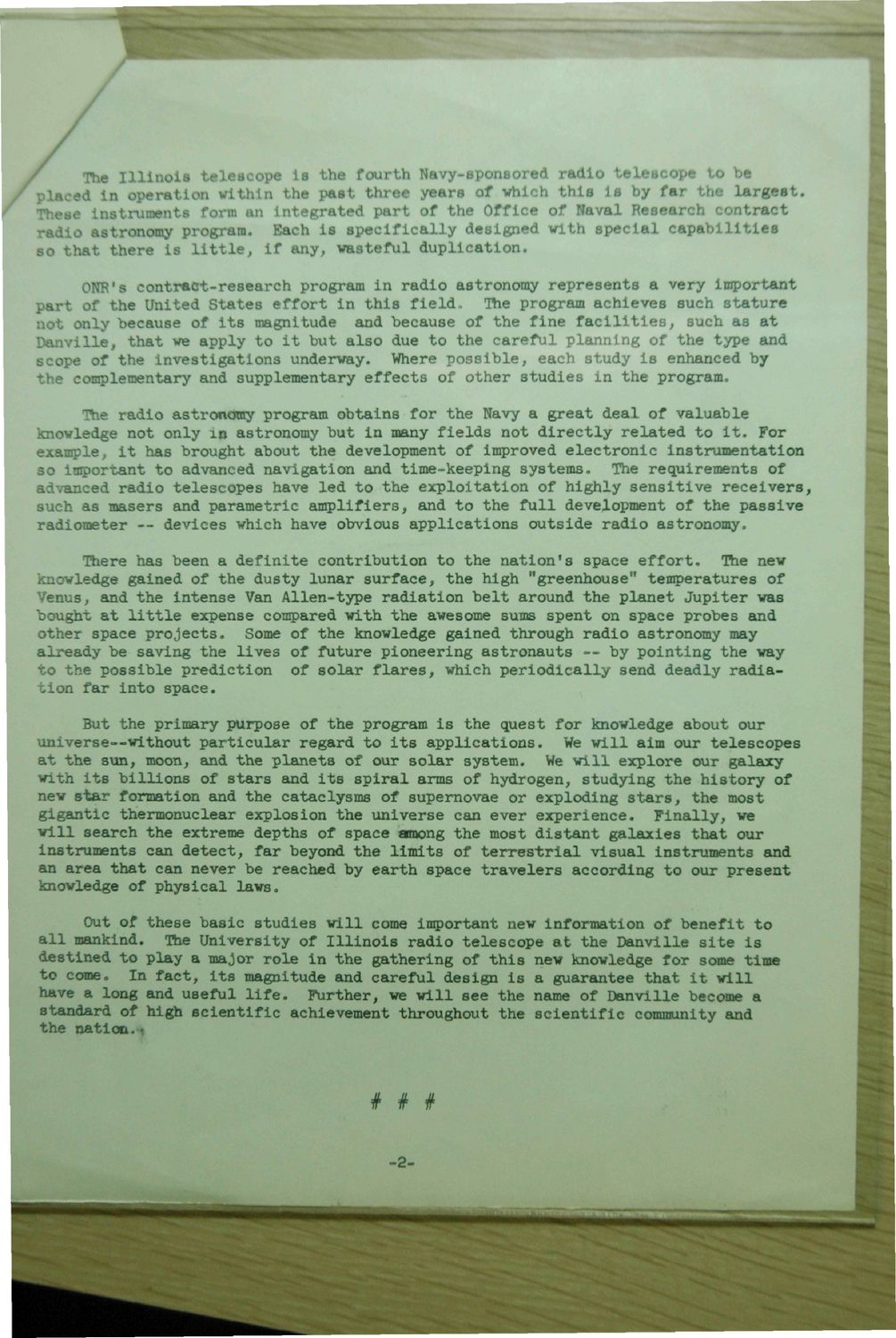| |
| |
Caption: Dedication - Radio Telescope Dedication Remarks
This is a reduced-resolution page image for fast online browsing.

EXTRACTED TEXT FROM PAGE:
The Illinois telescope is the fourth Navy-sponsored radio telescope to be placed in operation within the past three years of which this is by far the largest. These instruments form an integrated part of the Office of Naval Research contract radio astronomy program. Each is specifically designed with special capabilities so that there is little, if any, wasteful duplication. ONR's contract-research program in radio astronomy represents a very important part of the United States effort in this field. The program achieves such stature not only because of its magnitude and because of the fine facilities, such as at Danville, that we apply to ittoutalso due to the careful planning of the type and scope of the investigations underway. Where possible, each study is enhanced by the complementary and supplementary effects of other studies in the program, The radio astronomy program obtains for the Navy a great deal of valuable knowledge not only in astronomy but in many fields not directly related to it. For example9 it has brought about the development of improved electronic instrumentation so important to advanced navigation and time-keeping systems. The requirements of advanced radio telescopes have led to the exploitation of highly sensitive receivers, such as masers and parametric amplifiers, and to the full development of the passive radiometer — devices which have obvious applications outside radio astronomy, There has been a definite contribution to the nation's space effort. The new knowledge gained of the dusty lunar surface, the high "greenhouse" temperatures of Venus, and the intense Van Allen-type radiation belt around the planet Jupiter was bought at little expense compared with the awesome sums spent on space probes and other space projects. Some of the knowledge gained through radio astronomy may already be saving the lives of future pioneering astronauts — by pointing the way to the possible prediction of solar flares, which periodically send deadly radiation far into space. But the primary purpose of the program is the quest for knowledge about our universe—without particular regard to its applications. We will aim our telescopes at the sun, moon, and the planets of our solar system. We will explore our galaxy with its billions of stars and its spiral arms of hydrogen, studying the history of new star formation and the cataclysms of supernovae or exploding stars, the most gigantic thermonuclear explosion the universe can ever experience. Finally, ve trill search the extreme depths of space among the most distant galaxies that our instruments can detect, far beyond the limits of terrestrial visual instruments and an area that can never be reached by earth space travelers according to our present knowledge of physical lavs. Out of these basic studies will come important new Information of benefit to all Mankind. The University of Illinois radio telescope at the Danville site is destined to play a major role in the gathering of this new knowledge for sons time to come. In fact, its magnitude and careful design is a guarantee that it will have a long and useful life. Further, we will see the name of Danville become a standard of high scientific achievement throughout the scientific community and the nation.* # # # -2-
| |